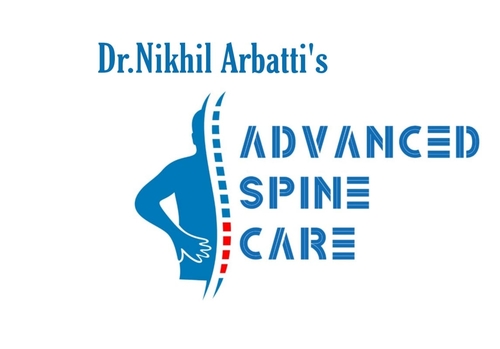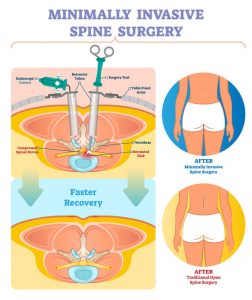General Introduction
Conditions When Spinal Surgery Is Indicated:
A Spinal surgery is advised for certain spinal conditions. When Certain Red Flags/Criteria are present, a Surgery is indicated ;
- If worsening of neurological problems is noticed, eg weakness in hands or legs is increasing.
- If there is increase in intensity of pain, inspite of adequate conservative management.
- Patients walking distance is gradually reducing, so if the patient was able to walk 1-2 kms earlier, and now it has decreased to <300 metres, this is significant worsening.
- If the patient is gradually getting a deformity in the spine, which is affecting his mobility and causing pain.
- Any Infections or tumour in spine is suspected, and this is compressing the neural structures and causing weakness.
Our team of Spine Specialists, evaluate all patients and see all measures of improving the patients symptoms conservatively initially and if the Red Flags are present, only then we recommend a surgery. So that it will benefit the patient better and quicker.
There are various techniques of performing spinal surgery, and there are different surgeries for a variety of problems associated with the spine.
Development of Spinal Surgery
Earlier Routine Spine Surgery was performed through the conventional, traditional Open Approach, Through this Approach without magnification or any Advanced equipments the surgery was done.
These techniques have been the gold standard for performing spinal surgeries and have produced assured outcomes. Over time, with the development of microscopes and other specialised equipments, Minimally invasive techniques for Spinal surgery started evolving.
The Growth of Minimally Invasive/Keyhole Spine Surgery has been the biggest Success story of Spine Surgery.
Since there is apprehension about an Open Spine Surgery and its outcomes, A Minimally Invasive Spine Surgery is able to achieve the same outcome, but with minimal damage to the normal structures and a quick back to routine activities for the patient.
Conditions treated By Minimally Invasive or Endoscopic Approach by Our team :
- Slip Disc.
- Spinal Stenosis.
- Spondylolisthesis.
- High Grade Spondylolisthesis.
- Scoliosis
- Kyphosis
- Spinal Tumours
- Ankylosing Spondylitis with Deformity.
- Cervical Myelopathy
- Cervical Disc Prolapse
- Spinal Fractures
- Tb Spine
- Infections in Spine
- Osteoporotic fractures in Spine
- Revision Spine Surgery.
- Deformity Correction Spine Surgeries.
BENEFITS OF MISS
Minimally Invasive Spine Surgery (MISS) & Its Benefits.
The development of MISS was done with the aim to reduce the side effects associated with an Open Spine Surgery (OSS) and thus to reduce the morbidity to the patient.
Minimally Invasive Spine surgery is different from routine Open spine surgeries in :
- A smaller skin incision is made instead of big scar inducing cut.
- Through the smaller skin incision, even less muscle and normal tissue damage is done to reach at the targeted area.
- Once after reaching the targeted area, we use microscopes and other instruments for visualization for performing the surgery, this magnifies the operating field tremendously and makes even fine nerves and tissues to be visualised properly.
- This magnification thus aids in preventing any inadvertent damage to neural and other important structures.
- Blood loss is minimal .
Figure showing benefits of Minimally invasive spine surgery over open Miss
- We also use for aiding our surgery Navigation and Nerve Monitoring Equipments, these increase the accuracy and preciseness of the surgical outcome.
- A patient who undergoes a MISS surgery seldom requires an ICU stay, post surgery pain medications requirement is also less, and blood transfusion is rarely required (Unless otherwise indicated)
- Post operatively the surgical site pain being less, the patient can be mobilized very quickly, thus his early resumption of normal activities is also possible.


